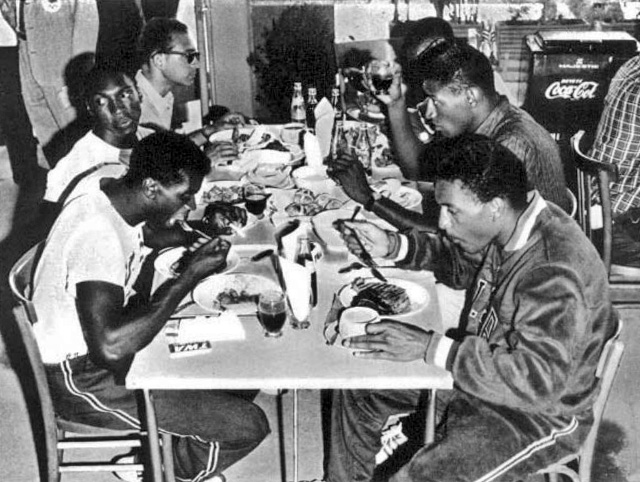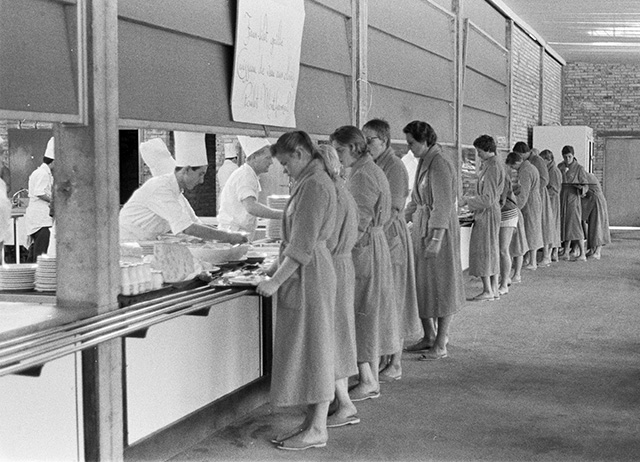The food supplied for the athletes at an Olympic Village needs to cater to a diversity of sports, cultures, ages and special dietary needs. Below is some information about the Olympic Village food service and menu for the Games in Rome 1960. We have more pages about Olympic Village nutrition with links to information about the food supplied at other Olympic Games.
 American athletes enjoying a meal at a village dining room
American athletes enjoying a meal at a village dining room(from the Olympic Games Official Report Rome 1960)
1960 Rome Dining Halls
At the Rome Olympics in 1960, service in the Dining Hall was like that at a restaurant. Tables were set by waiters, who also put out glasses with water carafes and serviettes. Crockery and cutlery were collected once meals were finished.
There were ten restaurant pavilions, situated on both sides of the Viaduct of Corso Francia measuring 36 × 34 meters, constructed on supporting structures in cement with walls in tiles and large glass panes, covered with light metallic wire structure and corrugated iron; intentionally placed one against the other to allow the supply of provisions by the single entrance corridor for both restaurants. Each had a central kitchen, two canteen rooms, refrigerating plant at one end and hygienic installations at the other.
 swimmers lining up for a meal at th Rome Olympics
swimmers lining up for a meal at th Rome Olympics
The Plan
To provide satisfactory meals to the different delegations from around the world, they were divided into nine groups, according to racial and dietetic similarities, and each of these groups was assigned a separate restaurant. There was an international "general menu", plus each of these nine restaurants was provided with "special menus" containing more typical dishes of each nationality/group.
Individual athletes were also permitted to choose and follow the type of diet best suited to the requirements of their particular sports, the observance of this diet was the responsibility of the athlete.
The athletes who were not in the village at meal times could request picnic lunches to take away. Over three thousand picnic lunches were prepared during the Olympic period.
Source: The Games of the XVII Olympiad, Rome 1960 : the official report of the Organizing Committee of the Games of the XVII Olympiad, volumes 1.
Related Pages
- Olympic Village nutrition, includes links to information about the menu at other Olympic Games.
- Nutrition at the Olympics
- About the 1960 Olympic Games
- History of the Olympic Games Athlete Villages
- Nutrition for Athletes at Major Events


 Current Events
Current Events